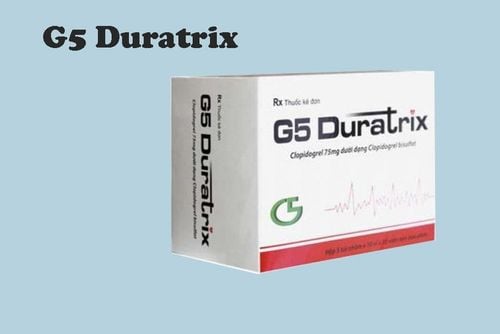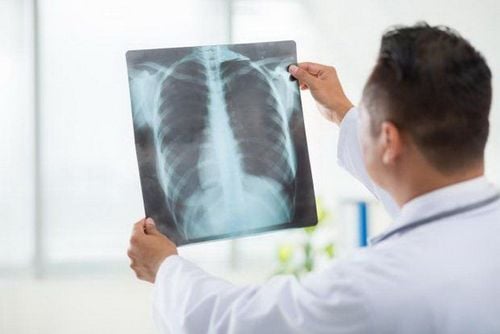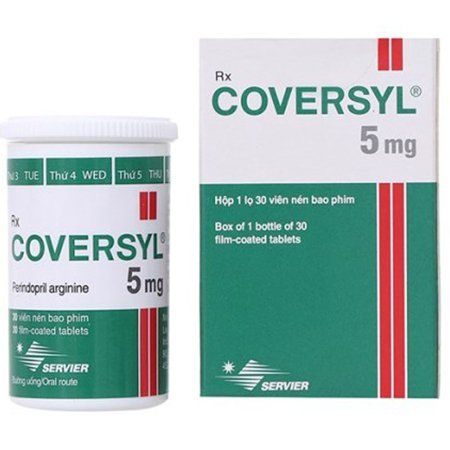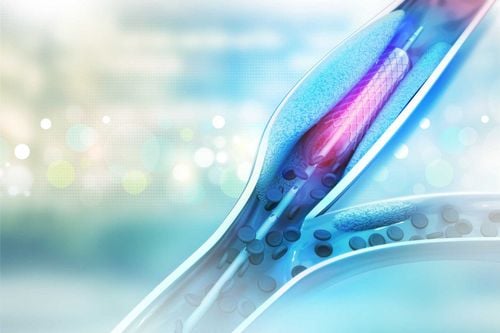This is an automatically translated article.
The article is professionally consulted by Master, Doctor Pham Manh Chung - Department of Diagnostic Imaging - Vinmec Ha Long International Hospital
Coronary artery calcification is an early sign of coronary artery disease, when atherosclerotic plaque builds up in the artery walls. Over time, plaque can harden or rupture, narrowing the coronary arteries and reducing blood flow to the heart, causing chest pain or discomfort in the chest, even causing a heart attack. Computed tomography coronary angiography is an effective diagnostic tool for coronary calcification.
1. What is CT coronary angiography?
Computed tomography assessment of coronary calcification is a fairly simple survey. The patient lies still in the scanner for about 10 minutes to take the heart. Images will be shown to see if the coronary arteries are calcified.
2. Other names for CT coronary angiography
Calcium scan test: CT scan for calcification. Cardiac CT for calcium scoring: CT scan of the heart to find the index of coronary calcification. Electron beam computed tomography (EBCT) or Electron beam tomography (EBT). Multidetector computed tomography (MDCT). Calcium scan test: CT scan for calcification. Cardiac CT for calcium scoring: CT scan of the heart to find the index of coronary calcification. Electron beam computed tomography (EBCT) or Electron beam tomography (EBT). Multidetector computed tomography (MDCT).
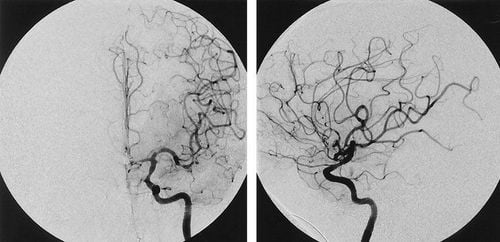
Hình ảnh CT mạch máu
3. Coronary CT scanner
Two types of machines that can display calcium levels in the coronary arteries are electron beam computed tomography (EBCT) and multidetector computed tomography (MDCT). Both types use X-rays to create images of the heart. The doctor will study the images to predict whether the patient is at risk for future heart disease or not.4. Benefits of CT scan to assess the degree of coronary calcification
CT scanning for coronary calcification is most beneficial for people at average risk of heart attack. Your doctor can calculate your 10-year risk of getting the disease. People at average risk have a 10-20% chance of having a heart attack within the next 10 years. CT scans to evaluate coronary calcifications can help clinicians decide which patients in this group need therapeutic intervention.
Computed tomography assessment of coronary artery calcification is the use of a computed tomography machine without iodine contrast to visualize atherosclerotic nodules, calcification of the coronary artery system on tomographic images. . It only allows to determine the degree of coronary artery calcification but does not assess the degree of narrowing and the nature of atherosclerotic plaque.
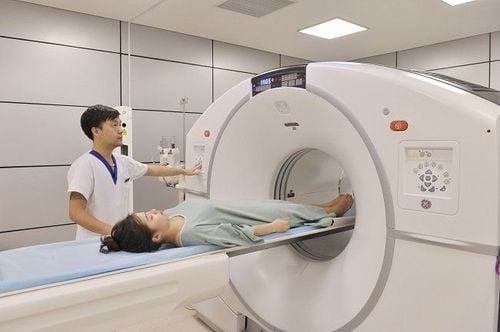
Hệ thống máy chụp CT tại Bệnh viện đa khoa Quốc tế Vinmec
5. Coronary computed tomography scan procedure
The photographer is less restricted before shooting. However, the doctor may ask the patient to avoid drinking coffee and smoking for 4 hours before the scan. Before the scan, the patient will remove his or her clothes, belt, and hospital gown. Take off all jewelry around your neck or on your chest.
CT scan to evaluate coronary calcification is done in the hospital or outpatient clinic. Technicians will clean the patient's chest area and apply adhesive pads with sensors called electrodes. The electrodes are connected to an electrocardiogram (ECG) machine. Electrocardiograms record the electrical activity of the heart during the scan, helping to capture the heart during diastole (when the heart rests between contractions).
The CT scanner is a large machine with a round hollow tube in the center. The patient will lie on his back on the slide, which can then slide into the machine's circular tube. Inside the machine, an X-ray tube moves around the body to take pictures of the heart.
The technician controls the machine from the next room. The technician will ask you to lie still and hold your breath for a short time during each scan. The patient may be given medication to slow the heart rate, allowing the machine to take clearer pictures of the heart.
6. How long does a CT scan to assess coronary calcification take?
A CT scan to evaluate coronary calcifications will take about 10-15 minutes, although the actual scan will take only a few seconds. Patients can return to normal activities after a CT scan to evaluate coronary calcification.
7. Risks of coronary angiography
CT scanning for coronary calcification has very little risk. This technique is non-invasive, without surgery, and no instruments are inserted into the body. Unlike some other CT scan techniques, CT scanning for coronary calcification does not require contrast injection.
CT assessment of coronary calcifications may be related to radiation, although the dose used is considered small. Electron beam computed tomography (EBCT) uses less radiation than multislice computed tomography (MDCT). In both cases, the total radiation dose received during the scan was about the same as the radiation dose when exposed to nature within 1 year.
MORE:
Dangerous complications of coronary atherosclerosis Accurate diagnostic techniques for coronary artery disease Computerized tomography - the gold standard in diagnosing coronary heart disease





